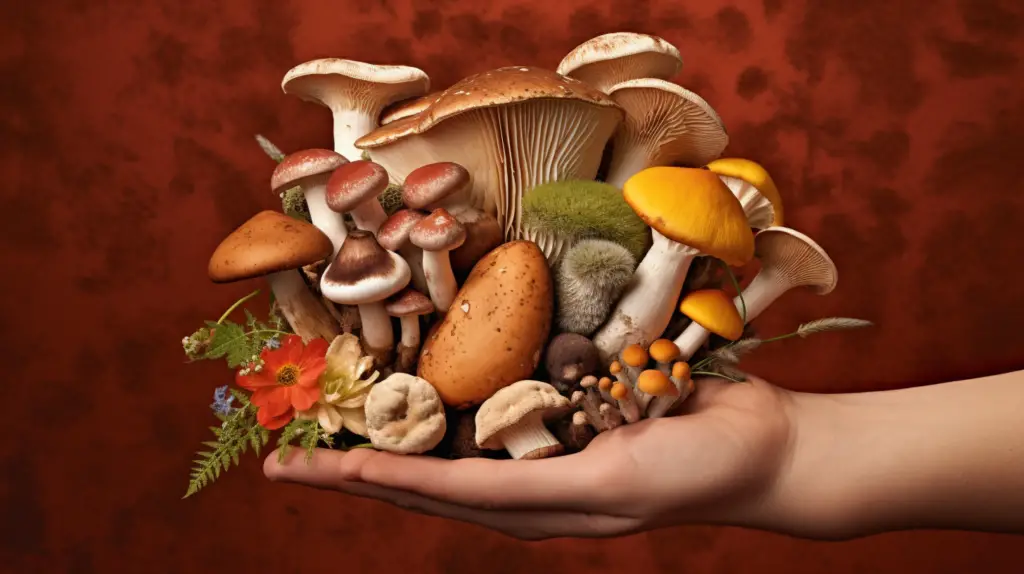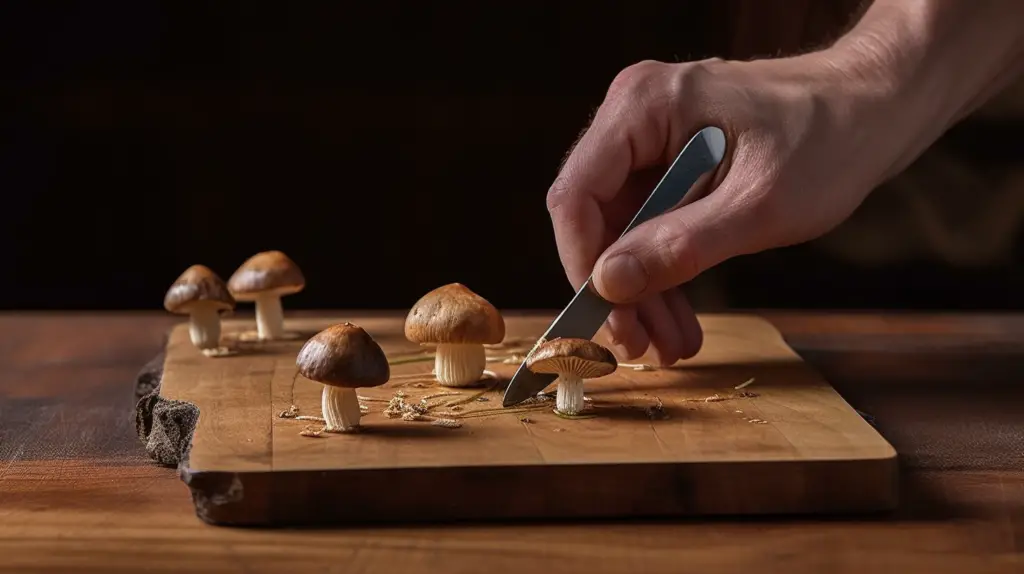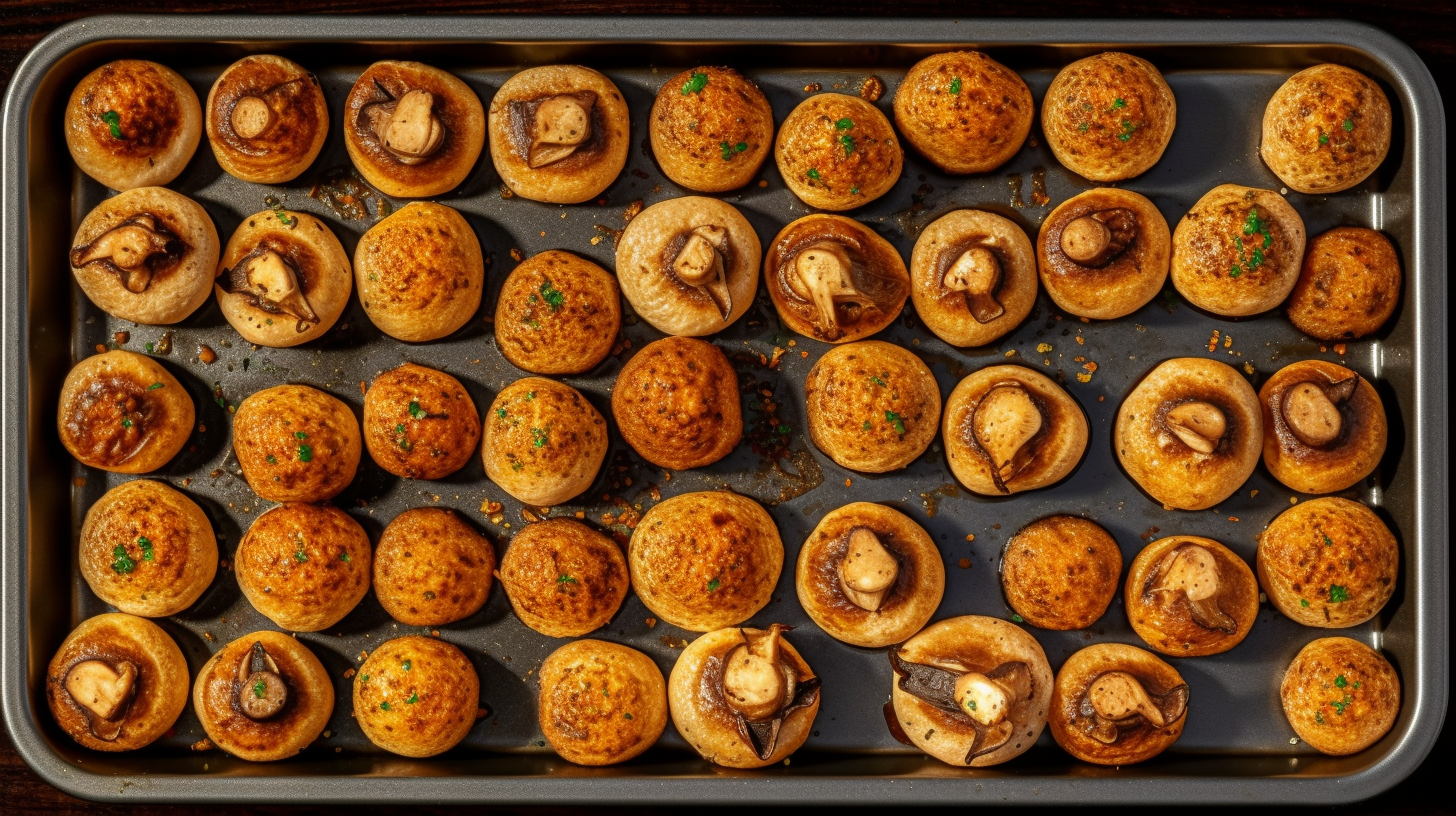Mushrooms are a versatile ingredient that can be used in various recipes, including stuffed mushrooms. These bite-sized appetizers are delicious and easy to make, but what if you have leftovers or want to prepare them ahead of time? Freezing stuffed mushrooms is an excellent solution to preserve their flavor and texture.
In this article, we will guide you through the process of freezing stuffed mushrooms so that you can enjoy them anytime. To freeze stuffed mushrooms, it’s essential to follow specific guidelines for food safety and quality preservation. Choosing the right type of mushroom is crucial since not all mushrooms freeze well. Moreover, preparing the mushrooms for stuffing requires some care to avoid damaging them. Making the stuffing mixture also needs attention to ensure that it has the right consistency and flavors.
Flash freezing the stuffed mushrooms before storing them properly is another step that shouldn’t be overlooked. Finally, thawing and reheating frozen stuffed mushrooms require special attention as well. By following these steps correctly, you can enjoy your favorite appetizer without compromising its taste or appearance.
Key Takeaways
- Choosing the right mushroom is crucial for freezing stuffed mushrooms, with button, cremini, and portobello mushrooms being good options.
- Pre-cooking mushroom caps and using a customized stuffing mixture with consistent texture are important for preserving quality and freshness.
- Flash freezing in airtight, moisture-resistant containers helps to prevent large ice formations and freezer burn.
- Thawing and reheating should be done slowly and carefully with gentle heat sources to maintain taste and appearance.
Choosing the Right Mushrooms for Freezing

The selection of mushrooms for freezing should prioritize firm, unblemished specimens with consistent coloring and minimal bruising. Mushroom varieties such as button, cremini, and portobello are excellent choices for stuffing due to their size and shape. It is important to note that the shelf life of mushrooms varies depending on the type and freshness, so it is recommended to use them within a week of purchase.
When selecting mushrooms for freezing, it is essential to inspect each specimen carefully. Look out for any signs of discoloration or soft spots as these may indicate spoilage. Additionally, avoid purchasing pre-packaged mushrooms as they may have already been sitting in the store’s shelves for an extended period.
Once you have selected your mushrooms carefully, clean them thoroughly with a damp cloth or paper towel before proceeding with the stuffing process. This step will help remove any dirt or debris that may be clinging onto the surface of the mushroom cap.
Choosing the right mushrooms for freezing requires careful consideration of their quality and freshness. By prioritizing firm, unblemished specimens with consistent coloring and minimal bruising, you can ensure that your stuffed mushrooms will turn out deliciously every time.
With your selected mushrooms in hand, it’s time to move on to preparing them for stuffing by cleaning them properly before moving on to the next step in the process.
Preparing the Mushrooms for Stuffing

To prepare the mushrooms for filling, gently remove the stems and use a spoon to create a small well in each cap.
Cleaning mushrooms is an essential step before cooking them. You can clean mushrooms by wiping them with a damp cloth or rinsing them under cold water. Avoid soaking them in water as they tend to absorb it and become soggy.
After cleaning the mushrooms, pre-cooking them will make sure that they are tender when you stuff them. You can pre-cook the mushroom caps by baking or sautéing them until they are slightly browned. This process also helps to remove any excess moisture from the mushrooms, which could make your stuffing mixture too wet.
Once you have prepared your mushroom caps, you can move on to making the stuffing mixture. This step involves combining various ingredients such as breadcrumbs, cheese, herbs, and spices into a cohesive mixture that will be used to fill up the mushroom caps.
By following these steps correctly, you can easily freeze stuffed mushrooms for later consumption without compromising their taste or texture.
Preparing mushrooms for stuffing involves removing their stems and creating small wells in each cap using a spoon. It is vital to clean and pre-cook the mushrooms before filling them with your desired stuffing mixture to ensure that they are tender and free of excess moisture.
The next step after preparing your mushroom caps is making your stuffing mixture without overstuffing it into each cap.
Making the Stuffing Mixture
Combining a blend of savory ingredients like breadcrumbs, minced garlic, grated Parmesan cheese, and aromatic herbs such as thyme or rosemary creates an irresistible stuffing mixture that will elevate the flavor profile of your mushroom dish.
This simple yet delectable mixture can be easily customized to suit individual preferences by incorporating various flavor variations. For instance, adding chopped sundried tomatoes or caramelized onions to the mixture imparts a tangy sweetness that perfectly balances the earthiness of mushrooms. Similarly, for a spicy twist, one can add diced jalapenos or red pepper flakes to the mix.
For those who follow vegetarian diets, there are several options available to substitute meat-based fillings in stuffed mushrooms. One popular option is using crumbled tofu or tempeh instead of ground meat in the stuffing mixture. These plant-based proteins provide a similar texture and mouthfeel as meat while being lower in fat and calories. Another alternative is using cooked grains such as quinoa or bulgur wheat mixed with vegetables like spinach or kale for a hearty filling that packs a nutritional punch.
Apart from flavor variations and vegetarian options, it is essential to ensure that the stuffing mixture has the right consistency for easy handling when filling mushrooms. The ideal texture should be moist enough to stick together but not too wet that it falls apart when spooned into mushroom caps. To achieve this balance, gradually add liquid (such as broth or olive oil) while mixing until you reach the desired consistency.
Having prepared a flavorful and well-balanced stuffing mixture, it’s time to move on to filling your mushrooms with this delectable concoction without overstuffing them.
Stuffing the Mushrooms
A key step in preparing stuffed mushrooms is ensuring that the mushroom caps are properly prepped to hold the stuffing mixture. To do this, gently clean the mushroom caps with a damp towel or brush to remove any dirt or debris.
Remove the stems from each mushroom cap and use a spoon or melon baller to create a small cavity in the center of each cap. The cavity should be large enough to hold a small spoonful of filling, but not so deep that it goes all the way through the cap.
Next, it’s time to stuff the mushrooms with your desired filling. There are many types of stuffing options available, including meat-based fillings like sausage or bacon, as well as vegetarian options like spinach and cheese.
Spoon a small amount of your chosen filling into each mushroom cap and use your fingers to press it down gently. Be sure not to overfill the mushrooms as they may burst during cooking.
If you’re looking for vegetarian options for stuffing your mushrooms, there are plenty of delicious choices out there. Consider using ingredients like quinoa, lentils, tofu or tempeh mixed with vegetables such as chopped bell peppers, onions and garlic for added flavor and texture.
You can also add different herbs such as basil, thyme or rosemary for an extra depth of flavor.
With your stuffed mushroom caps ready to go, we can now move on to flash freezing them for later consumption without affecting their taste and texture.
Flash Freezing the Stuffed Mushrooms
Flash freezing is a common preservation method used for various food items, but how can it be applied to stuffed mushrooms? Flash freezing the stuffed mushrooms is an effective way to maintain their freshness and quality. Freezing them also gives you the convenience of having ready-to-serve stuffed mushrooms that can be cooked in no time.
Benefits of flash freezing include preserving the texture, flavor, and nutritional value of your food. By rapidly lowering the temperature, ice crystals are formed quickly, preventing large ice formations that can damage cell walls and alter the taste and texture of your dish. Flash freezing also locks in nutrients, ensuring that they remain intact even after thawing.
When stuffing mushrooms, ensure that you fill them properly to prevent air pockets from forming inside. This ensures that each mushroom cooks evenly during preparation. One way to do this is by using a small spoon or piping bag to fill each mushroom cap with just enough filling without overstuffing them. You may also want to consider leveling off any excess filling on top so that they don’t overflow while cooking.
Another tip for evenly stuffing mushrooms is by selecting ones with similar sizes as much as possible. This makes it easier for you to stuff them consistently without worrying about overstuffing or under-filling certain caps. It also helps ensure even cooking times when preparing them later on.
Properly storing frozen stuffed mushrooms is crucial in maintaining their quality and freshness until they’re ready for consumption. In the next section, we’ll discuss some guidelines on how best to store your frozen stuffed mushrooms without compromising their taste or texture.
Properly Storing the Frozen Stuffed Mushrooms
To preserve the quality and freshness of your prepared mushrooms, proper storage techniques are essential. After flash freezing the stuffed mushrooms, it is important to transfer them to a suitable container for long-term storage in the freezer. The best containers for freezing stuffed mushrooms are those that are airtight and moisture-resistant. This will prevent freezer burn and ensure the taste and texture of the mushroom filling remains intact.
When choosing a container for storing frozen stuffed mushrooms, it is recommended to use either plastic or glass containers with lids that can seal tightly. These types of containers will keep out air and moisture, which can cause ice crystals to form on the surface of the food. Additionally, they help protect against odors from other foods in the freezer which could affect the taste and smell of your stuffed mushrooms.
The following table highlights some options for storing frozen stuffed mushrooms:
| Container Type | Pros | Cons |
|---|---|---|
| Plastic Containers with Lids | Inexpensive, lightweight, durable | May crack or break if dropped |
| Glass Containers with Lids | Resistant to stains and odors, easy to clean | More expensive than plastic containers |
When you’re ready to thaw your frozen stuffed mushrooms, it’s best to do so slowly in order to maintain their texture and flavor. To thaw them properly, take them out of the freezer and place them in a refrigerator for several hours until fully defrosted. Alternatively, you can also thaw them by placing them on a plate at room temperature for several hours.
Proper storage techniques are essential when it comes to keeping your prepared food fresh in the long term. By using an appropriate container that is both airtight and moisture-resistant when freezing your stuffed mushrooms, you’ll be able to enjoy their delicious taste even after weeks or months have passed since preparation. With this information on how best containers can help store frozen stuffed mushrooms as well as tips on thawing, you’re now ready to move on to the next section on how to thaw and reheat your stuffed mushrooms.
Thawing and Reheating the Stuffed Mushrooms
When preparing to serve frozen stuffed mushrooms, it is important to use a gradual thawing process and reheat them carefully to ensure that their texture and flavor are preserved.
One recommended method for thawing the mushrooms is to transfer them from the freezer to the refrigerator and allow them to defrost slowly overnight. Alternatively, they can be placed in a sealed plastic bag and submerged in cold water until completely thawed.
Once the stuffed mushrooms have been fully thawed, they should be reheated using gentle heat sources such as an oven or toaster oven. It is important not to use high heat sources such as a microwave or stove-top which could cause uneven heating, resulting in overcooked or dried out filling.
Preheat the oven at 350°F (180°C) and arrange the stuffed mushrooms on a baking sheet lined with parchment paper or aluminum foil. Heat for approximately 10-15 minutes until heated through.
The best serving suggestions for reheated stuffed mushrooms include adding fresh herbs such as thyme or rosemary on top of each mushroom before reheating, which will provide additional aromas and flavors. For added texture and crunchiness, sprinkle some breadcrumbs on top of each mushroom before baking.
Once reheated, serve immediately while still hot.
Properly thawing and reheating frozen stuffed mushrooms is essential in preserving their taste and texture. By following these simple tips on reheating techniques and best serving suggestions, you can ensure that your guests will enjoy perfectly cooked fungi every time!
Frequently Asked Questions
Can I freeze mushrooms that have already been cooked?
When it comes to freezing cooked mushrooms, there are both pros and cons to consider. On the one hand, freezing can be a great way to extend the shelf life of cooked mushrooms and reduce food waste. However, frozen mushrooms may not retain their texture or flavor as well as fresh ones.
In terms of reheating frozen stuffed mushrooms specifically, it’s generally best to thaw them in the refrigerator overnight before reheating in the oven or microwave. This will help ensure that they cook evenly and don’t become overly dry or rubbery.
Overall, while freezing cooked mushrooms is an option worth considering, it’s important to keep in mind that there are some potential drawbacks to doing so.
How long can I store frozen stuffed mushrooms in the freezer?
Freezing techniques are employed to prolong the shelf life of food items, including mushroom recipes. The duration for which frozen stuffed mushrooms can be stored in the freezer is dependent on various factors, such as the quality of the ingredients used, the type of stuffing and how well it has been cooked and frozen.
In general, stuffed mushrooms can be kept in the freezer for up to 2-3 months without any significant loss in quality or taste. It is recommended to store them in an airtight container or freezer bag to prevent moisture buildup that may lead to freezer burn.
Additionally, labeling the container with the date of freezing is essential for keeping track of their freshness. Overall, proper storage and handling practices are crucial for maintaining optimal food safety and quality when it comes to freezing stuffed mushrooms or any other food item.
Can I use any type of cheese in the stuffing mixture?
Imagine a painter with a blank canvas in front of them, choosing from an assortment of colors to create their masterpiece.
In the same way, when it comes to stuffing mushrooms with cheese, there are various options available to the cook.
Different types of cheese bring distinct flavors and textures to the dish, allowing for endless flavor combinations.
Some popular choices include feta, goat cheese, parmesan, and mozzarella.
Feta brings a tangy taste while goat cheese offers creaminess and a sharp flavor.
Parmesan adds nutty tones while mozzarella creates an oozy texture when melted.
Ultimately, the choice of cheese depends on personal preference and what works best with other ingredients in the stuffing mixture.
Can I add other ingredients to the stuffing mixture, such as meat or vegetables?
When it comes to preparing stuffed mushrooms, the stuffing mixture can be customized to include a variety of ingredients. Adding protein to the stuffing mixture is a common practice, with options like ground meat or even seafood being popular choices. For those who prefer vegetarian stuffing alternatives, vegetables such as spinach or roasted red peppers can be used instead.
When incorporating additional ingredients into the stuffing mixture, it’s important to ensure they are properly cooked and seasoned before filling the mushroom caps. Additionally, adjusting the ratios of other ingredients may be necessary in order to maintain the desired texture and flavor profile.
Overall, there are many possibilities when it comes to customizing stuffed mushroom recipes according to personal taste preferences and dietary restrictions.
Do I need to blanch the mushrooms before stuffing and freezing them?
When it comes to preparing mushrooms for freezing, there are a few important considerations to keep in mind. One of these is the necessity of blanching before freezing. Blanching involves briefly boiling vegetables in water before quickly cooling them in ice water, and can help to preserve the texture and flavor of the mushrooms during the freezing process.
While some recipes may call for stuffing mushrooms prior to blanching, this step should not be skipped if you plan on freezing the stuffed mushrooms. As for stuffing options, there are many ingredients that can be used to create delicious and unique stuffed mushroom dishes, including meat, vegetables, herbs, and cheeses.
Ultimately, your choice of stuffing will depend on your personal preferences and dietary restrictions.
Conclusion
Freezing stuffed mushrooms is a great way to preserve their taste and texture while extending their shelf life. By following the right steps, you can ensure that your frozen stuffed mushrooms are just as delicious as when they were first made.
First, choose the right mushrooms for freezing and prepare them by removing the stems and cleaning them thoroughly. Then, make a stuffing mixture of your choice using ingredients such as breadcrumbs, cheese, and herbs.
Once you have prepared the stuffing mixture, stuff it into the mushroom caps and flash freeze them before storing in an airtight container in the freezer. When ready to enjoy them again, thaw and reheat the stuffed mushrooms until they are heated through.
With these simple steps, you can easily freeze stuffed mushrooms for later use without compromising on quality or flavor. In conclusion, freezing stuffed mushrooms is an excellent way to save time while still enjoying this tasty appetizer whenever you want.
As with any food preservation method, it is important to follow proper techniques to maintain safety and quality standards. With patience and attention to detail during every step of the process, you can successfully freeze your favorite stuffed mushroom recipe for future enjoyment.
As John Steinbeck once said: ‘It’s so much darker when a light goes out than it would have been if it had never shone.’ Just like a light going out can be jarring in its suddenness, so too can losing the taste of our favorite foods – but freezing allows us to keep that light shining brightly for longer periods of time.

